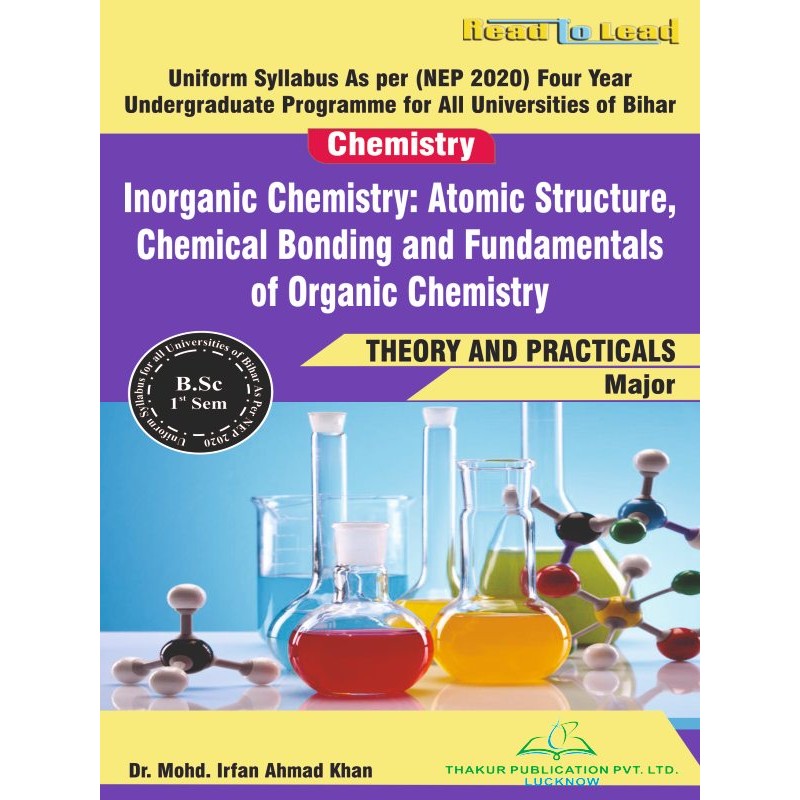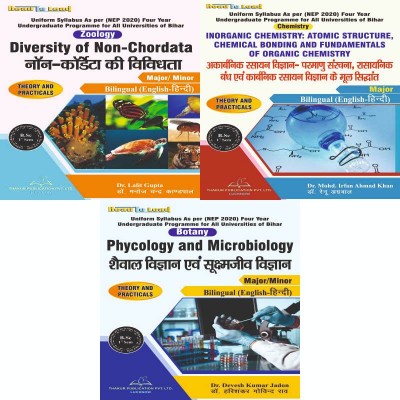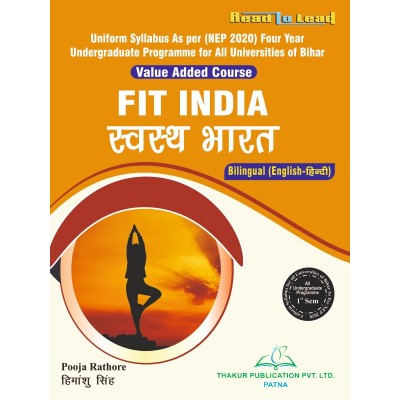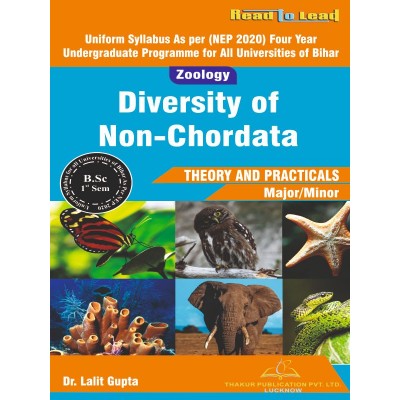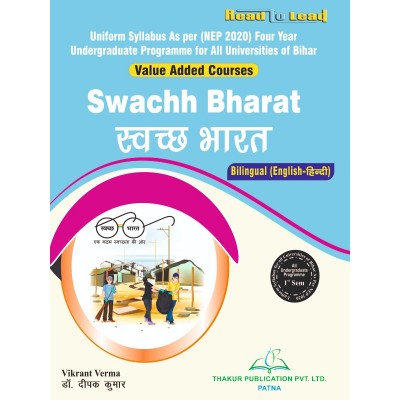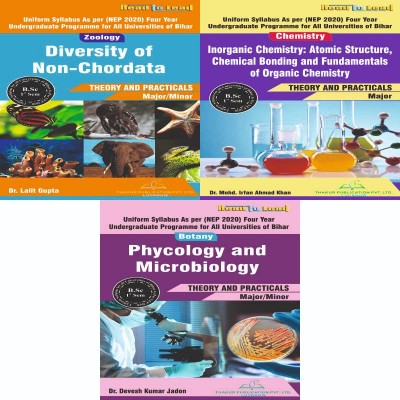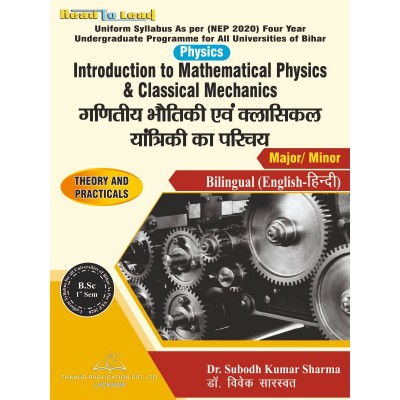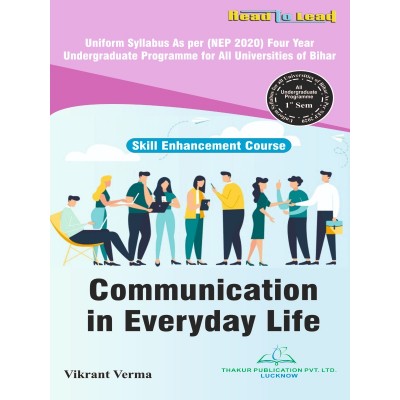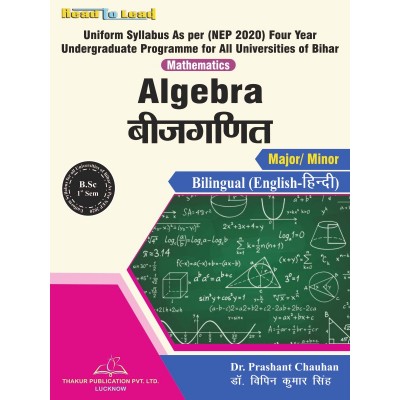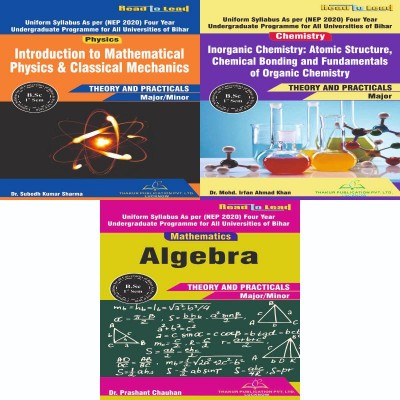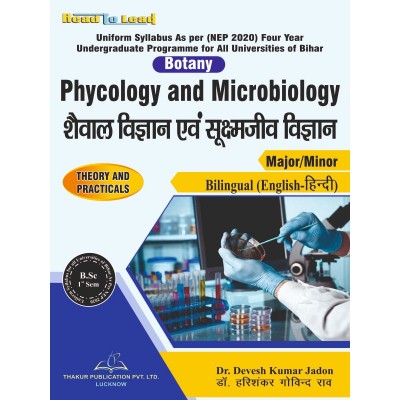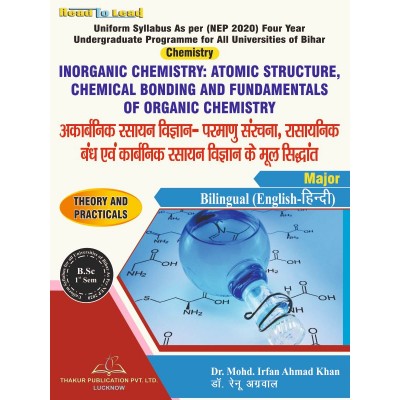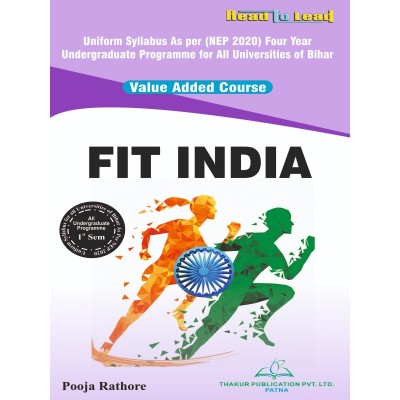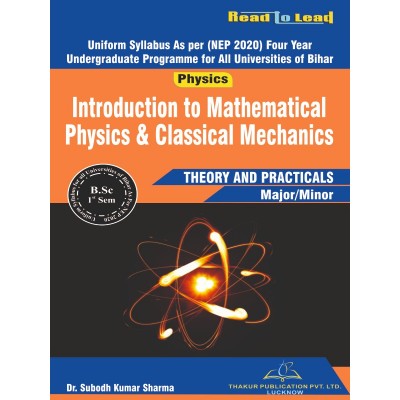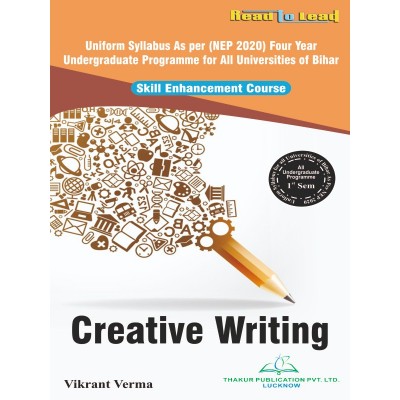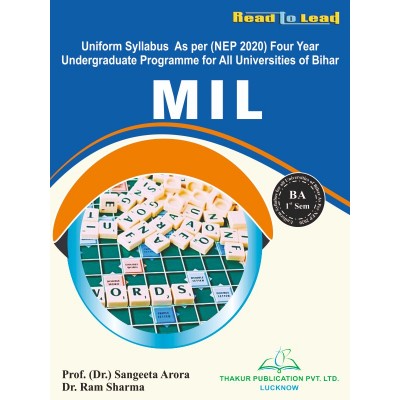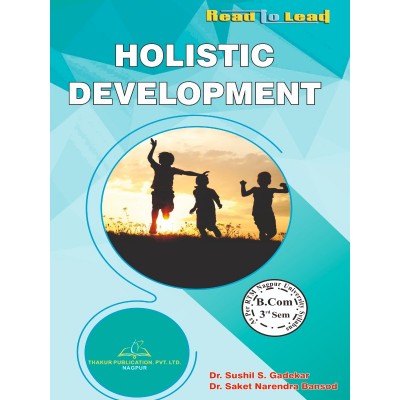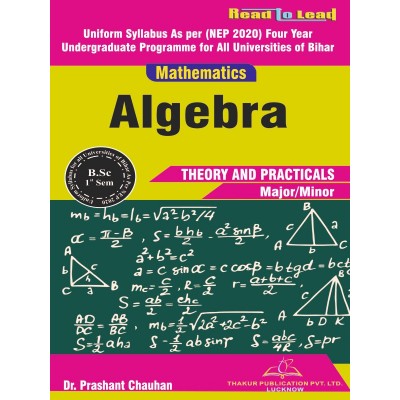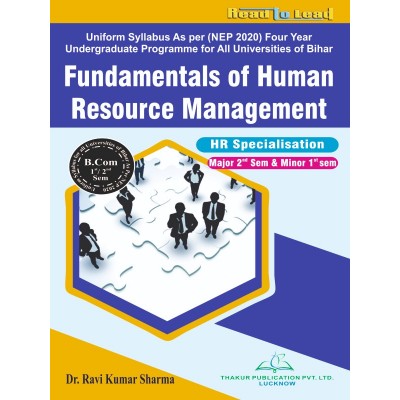(Chemistry) Inorganic Chemistry: Atomic Structure,Chemical Bonding and Fundamentals of Organic Chemistry Bihar B.SC First Sem
Tax excluded
Click below to Buy E-Book Edition:
Buy Latest (Chemistry) Inorganic Chemistry: Atomic Structure,Chemical Bonding and Fundamentals of Organic Chemistry Major Book in English language for B.Sc 1st Semester Bihar State By Thakur publication.
AUTHOR : Dr. Mohd. Irfan Ahmad Khan
ISBN : 9789357553582
Syllabus
MJC-1(T): Inorganic Chemistry: Atomic Structure, Chemical Bonding and
Fundamentals of Organic Chemistry
|
Inorganic Chemistry : Atomic Structure and Chemical Bonding |
|||
|
Unit |
Topics to be covered |
No. of Lectures |
|
|
1 |
Atomic Structure: Bohr’s Theory, its limitations and atomic spectrum of hydrogen atom. Wave mechanics: de Broglie equation, Heisenberg’s Uncertainty Principle and its significance, Schrodinger’s wave equation, significance of wave function. Quantum Numbers and their significance. Normalized and orthogonal wave functions. Sign of wave functions. Radial and angular wave functions for hydrogen atom. Radial and angular distribution curves. Shapes of s, p, d and f orbitals. Contour boundary and probability diagrams. Pauli’s Exclusions Principle, Hund’s Rule of maximum multiplicity, Aufbau’s principle and its limitations, Variations of orbital energy with atomic number. |
10 |
|
|
2 |
Chemical Bonding: (i) Ionic Bond: General characteristics, types of ions size effects, radius ratio rule and its limitations. Packing of ions in crystals. Born-Lande equation with derivation and importance of Kapustinskii expression for lattice energy. Madelung constant, Born-Haber cycle and its application, Solvation energy.
(ii) Covalent Bond: Lewis structure, Valence Bond Theory (Heitler-London approach). Energetics of hybridization, equivalent and non-equivalent hybrid orbitals. Bent’s rule, Resonance and resonance energy, Molecular orbital theory. Molecular orbital diagrams of diatomic and simple polyatomic molecules N2, O2, C2, B2, F2 & CO, NO and their ions; hydrogen chloride, berrylium fluoride, carbon dioxide, (idea of s-p mixing and orbital interaction to be given). Formal charge, Valence shell electron pair repulsion theory (VSEPR), shapes of simple molecules and ions containing lone pairs and bond pairs of electrons, multiple bonding (sigma and pi bond approach) and bond lengths.
Covalent character in ionic compounds, polarizing power and polaizability. Fajan’s rule and consequences of polarization. Ionic character in covalent compounds. Bond moment, dipole moment and electronegativity difference.
(iii) Metallic Bond: Qualitative idea of valence bond and band theories Semiconductors and insulators, defects in solids.
(iv) Weak Chemical Forces: Van der Waals forces, ion-dipole forces, dipole-dipole interactions, induced dipole interactions, Instantaneous dipole-induced dipole interactions, Repulsive forces, Hydrogen Bonding (theories of hydrogen bonding, valence bond treatment) Effects of chemical force, melting and boiling points, solubility energetics of dissolution process. |
10 |
|
|
Organic Chemistry: Stereochemistry and Hydrocarbons |
|||
|
3 |
Fundamentals of Organic Chemistry: Physical Effects, Electronic Displacements: Inductive Effect, Electromeric Effect, Resonance and Hyperconjugation. Cleavage of Bonds: Homolysis and Heterolysis. Structure, shape and reactivity of organic molecules, Nucleophiles and electrophiles. Reactive Intermediates: Carbocations, Carbanions and free radicals. Strength of Organic Acids and Bases: Comparative study with emphasis on factors affecting pK values. Aromaticity: Benzenoids and Hückel’s rule. |
05 |
|
|
4 |
Stereochemistry Conformations with respect to ethane, butane and cyclohexane. Interconversion of Wedge Formula, Newmann, Sawhorse and Fischer representations. Concept of chirality (upto two carbon atoms). Configuration: Geometrical and Optical isomerism; Enantiomerism, Diastereomerism and Meso compounds). Threo and erythro; D and L; cis - trans nomenclature; CIP Rules: R/ S (for upto 2 chiral carbon atoms) and E/ Z Nomenclature (for upto two C=C systems). |
05 |
|
|
5 |
Aliphatic Hydrocarbons Functional group approach for the following reactions (preparations & reactions) to be studied in context to their structure. Alkanes: (Upto 5 Carbons). Preparation: Catalytic hydrogenation, Wurtz reaction, Kolbe’s synthesis. From Grignard reagent. Reactions: Free radical Substitution: Halogenation. Alkenes: (Upto 5 Carbons) Preparation: Elimination reactions: Dehydration of alkenes and dehydrohalogenation of alkyl halides (Saytzeff’s rule); eis alkenes (Partial catalytic hydrogenation) and trans alkenes (Birch reduction). Reactions: cis-addition (alk. KMnO4) and trans-addition (bromine), Addition of HX (Markownikoff’s and anti-Markownikoff’s addition), Hydration, Ozonolysis, oxymecuration-demercuration, Hydroboration-oxidation. Alkynes: (Upto 5 Carbons) Preparation: Acetylene from CaC2 and conversion into higher alkynes, by dehalogenation of tetra halides and dehydrohalogenation of vicinal-dihalides. Reactions: formation of metal acetylides, addition of bromine and alkaline KMnO4, ozonolysis and oxidation with hot alk. KMnO4. |
10 |
|
|
|
TOTAL |
40 |
|
Practical
Inorganic and Organic Chemistry
|
Practical - 1. Inorganic Chemistry Practical a. Acidimetry and Alkalimetry b. Preparation and Dilution of standard solutions c. Permangnatometry / Dichromatry d. Iodometry / Iodimetry
Practical - 2. Organic Chemistry Practical Detection of elements, separation and purification of Organic Compounds and Hydrolysis of ester. |







